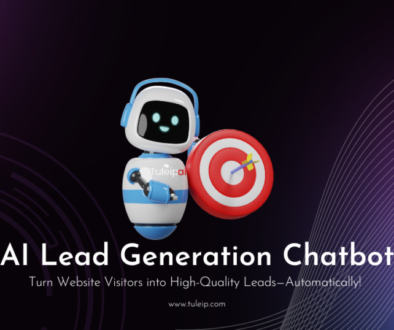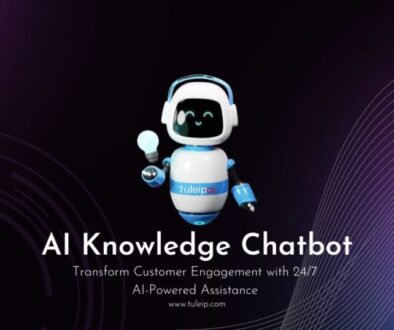AI Voice Bot: The Future of Conversational AI & Customer Interaction
Introduction
The rise of AI Voice Bots has revolutionized how businesses interact with customers. Traditional customer support channels—like phone calls and emails—are being replaced by intelligent voice assistants that provide instant, accurate, and human-like conversations.
From automating customer service to streamlining business operations, AI Voice Bots are transforming industries with efficiency, personalization, and 24/7 availability.
In this guide, we’ll cover:
✔️ What an AI Voice Bot is and how it works
✔️ Key benefits for businesses and customers
✔️ How to implement AI-powered voice bots
✔️ Best practices for optimizing voice interactions
Let’s explore how AI Voice Bots are shaping the future of communication. 🚀
What is an AI Voice Bot?
An AI Voice Bot is an advanced AI-powered virtual assistant that understands and responds to human speech using Natural Language Processing (NLP) and Speech Recognition. These bots can:
✅ Recognize spoken language and interpret user intent
✅ Respond in real-time with human-like interactions
✅ Automate customer support without human intervention
✅ Personalize conversations based on user history
Unlike traditional IVR (Interactive Voice Response) systems, AI Voice Bots use machine learning and deep learning to improve with every interaction.
How Does an AI Voice Bot Work?
An AI Voice Bot processes voice interactions in four key steps:
Step 1: Speech Recognition & Input Processing
📌 The AI bot listens to the user’s voice input and converts speech into text using Automatic Speech Recognition (ASR) technology.
Step 2: Natural Language Understanding (NLU)
📌 The bot uses Natural Language Processing (NLP) and AI models to:
✔️ Identify user intent (e.g., making a booking, checking order status)
✔️ Extract entities (e.g., date, time, location, customer ID)
Step 3: AI-Powered Response Generation
📌 The system processes data and generates a suitable response using:
✔️ Predefined responses for common queries
✔️ AI-generated dynamic answers based on real-time data
Step 4: Text-to-Speech (TTS) Conversion & Voice Output
📌 The bot converts the AI response into natural speech using Text-to-Speech (TTS) technology and communicates with the user.
This seamless AI-driven conversation enhances user experience, making interactions feel more human-like and intuitive.
Why Businesses Need AI Voice Bots
💡 83% of customers prefer self-service over speaking with a live agent (Source: HubSpot). AI Voice Bots provide instant responses, reducing wait times and improving customer satisfaction.
Key Benefits
✔️ 24/7 Availability: Voice bots never sleep, ensuring round-the-clock customer support.
✔️ Faster Response Time: Eliminates call queues and handles multiple inquiries simultaneously.
✔️ Reduced Operational Costs: Cuts down on human agent costs while scaling support efficiently.
✔️ Improved Customer Experience: Delivers personalized, real-time assistance with natural voice interactions.
✔️ Higher Accuracy & Continuous Learning: AI-driven voice bots learn from every interaction, improving accuracy over time.
✔️ Omnichannel Integration: Works across phone systems, mobile apps, websites, WhatsApp, and smart assistants (Alexa, Google Assistant).
✅ Industries Benefiting from AI Voice Bots:
✔️ Banking & Finance: Automates account inquiries, loan applications, and fraud detection.
✔️ Healthcare: Assists with appointment scheduling, patient FAQs, and symptom checking.
✔️ E-commerce & Retail: Handles order tracking, returns, and personalized shopping assistance.
✔️ Travel & Hospitality: Manages booking confirmations, check-ins, and customer support.
✔️ Customer Support Centers: Reduces call volumes, enhancing agent productivity.
How to Implement an AI Voice Bot for Your Business
🚀 Step-by-Step Guide:
1. Define Use Cases & Goals
✔️ Identify primary voice interactions (customer inquiries, sales, support, etc.).
✔️ Map out conversation flow and expected outcomes.
2. Choose the Right AI Voice Bot Platform
📌 Best AI Voice Bot Platforms:
✔️ Google Dialogflow – NLP-powered voice bot with cloud integration.
✔️ Amazon Lex – AI-driven voice bot for AWS-based applications.
✔️ IBM Watson Assistant – Enterprise-grade AI chatbot with voice capabilities.
✔️ Microsoft Azure Bot Service – Scalable AI voice bot for businesses.
3. Train Your AI Voice Bot with NLP Models
✔️ Use machine learning models to recognize speech patterns.
✔️ Train the bot for different accents, languages, and dialects.
4. Integrate with Business Systems
📌 Connect the bot with:
✔️ CRM (Salesforce, HubSpot) for customer data.
✔️ ERP & Inventory Systems for real-time updates.
✔️ Omnichannel platforms (WhatsApp, IVR, websites).
5. Optimize for Voice Search & Mobile Users
✔️ Ensure mobile-friendly voice interactions for seamless user experience.
✔️ Enable voice search optimization for local and business-related queries.
6. Test, Monitor & Improve
📊 Track chatbot performance through:
✔️ User intent accuracy & response time analysis.
✔️ Voice-to-text transcription accuracy improvements.
✔️ AI training updates based on real conversations.
Best Practices for AI Voice Bots
✅ Keep Conversations Natural: Use human-like speech patterns to enhance user experience.
✅ Enable Multilingual Support: Expand global reach by supporting multiple languages.
✅ Offer Live Agent Escalation: Allow users to connect with a human agent when needed.
✅ Optimize for Noisy Environments: Use noise-canceling AI to improve speech recognition.
✅ Ensure Data Privacy & Compliance: Follow GDPR & CCPA guidelines for secure voice interactions.
Future of AI Voice Bots
📢 AI voice technology is advancing beyond simple call automation—it’s evolving into emotionally intelligent AI assistants that can detect tone, sentiment, and intent with greater accuracy.
Key Trends in AI Voice Bots
🚀 Hyper-Personalized Voice AI – AI bots will adapt conversations based on user preferences.
🧠 Voice AI in Smart Devices – More businesses will integrate AI voice assistants into IoT devices.
🔄 AI Voice + Generative AI – AI voice bots will leverage LLMs (like GPT-4) for dynamic, real-time conversations.
📞 Voice Commerce (V-Commerce) – AI voice bots will power voice-enabled shopping experiences.
Businesses that adopt AI-powered voice bots will stay ahead in customer experience, sales automation, and operational efficiency.
Final Thoughts
An AI Voice Bot is a game-changer for businesses looking to enhance customer engagement, automate support, and drive conversions through natural, human-like voice interactions.
✔️ It works 24/7
✔️ Handles high call volumes
✔️ Provides instant, accurate responses
💡 Ready to transform your business with AI Voice Bots? The future of conversational AI starts now! 🚀
FAQs
💡 What is the best AI voice bot for customer support?
✔️ Google Dialogflow, Amazon Lex, and IBM Watson Assistant are top choices.
💡 Can AI voice bots replace human agents?
✔️ They automate routine tasks, but human agents are still needed for complex interactions.
💡 How do AI voice bots improve over time?
✔️ They learn from user interactions, improving speech recognition and response accuracy.
🚀 Have more questions? Drop them below! 👇
#AIVoiceBot #ConversationalAI #VoiceTechnology #ArtificialIntelligence #VoiceAssistant #ChatbotAI #CustomerExperience #SpeechRecognition #Automation #AIForBusiness #SmartVoiceAI #AIinCustomerService
📌 AI Call Center Automation
📌 AI Speech-to-Text Technology
📌 Voice-Activated AI Chatbot
📌 Smart AI Customer Support
📌 Multilingual Voice Bot
📌 AI-Powered IVR System
📌 AI Voice Bot for E-commerce
📌 Virtual Assistant with Machine Learning
📌 AI Voice Interaction Software
📌 Human-Like AI Voice


